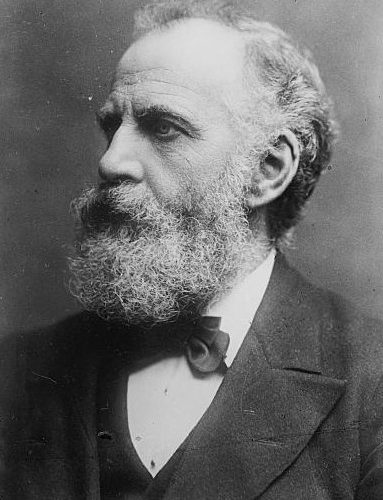Try to think for a moment about the personalities who perished during the RMS Titanic catastrophe (and no, I’m no talking about Leo). You’ll clearly see time has drowned the stories of these people just like their lives drowned in the Atlantic Ocean.
One could think there were no famous people in the Titanic at the time. That is harder to believe when one realises the first-class passages costed more than the average yearly wage of most people in the early 20th Century. And you are right not believing so. A lot of relevant business, political and cultural people both in the United States and even more in the United Kingdom -at the time the first world power- were aboard the ship.
Amongst them, the most famous of them all, was probably William Thomas Stead. W. T. Stead was a pioneer of investigative journalism and thus, one of the most controversial people at the time. He had a clear pacifist posture that clashed and influenced the behaviour of the British Army.
Born in 1849 in Embleton, a village with less than 1000 inhabitants 50 kilometres south of the border between Scotland and England; it was his desire for world peace that put him on the Titanic. He was to attend a conference in New York’s Carnegie Hall. The topic of his speech was going to be related to what had been discussed in The Hague’s peace conferences of 1899 and 1907, both of which he attended. The fact that a couple years after the Titanic sank, the Great War started is clear prove of the need to discuss the need for peace.
To give you an example of the value of his opinion, W. T. Stead had pressured the government of his country in 1884 to send his friend, General Charles Gordon, to Sudan, in order to protect the British interests in Khartoum.
His writing had also a mass impact in social topics. In fact, it was an article of his showing how easy it could be to find someone to procure him sexual relationships with girls in London that made legal age be raised from 13 to 16 for sex with consent.
Age 62, W. T. Stead was travelling in first class with a ticket he presumably paid £26 for. I would have spent his last hours reading in the smoking room for first class, as if he accepted his death before he figured out whether he could avoid it or not.
And it’s not a surprise if he actually behaved so calmly in such an extreme situation, because in March 1886, more than 26 years before the sinking, Stead published an article titled “How the steamship sank in the middle of the Atlantic Ocean, by a survivor”.
In this story, whose title is already shocking, he told the story of a steamship cruise with 916 passengers that hit another boat in the middle of the ocean. Given the fact that regulations at the time only assured lifeboats to be available for up to 390 people, the fictional collusion ended in tragedy.
Stead’s article finished with this sentence: “This is exactly what could happen, and will happen, if cruises depart without enough lifeboats.”
There is even more to this Nostradamus-like premonitions. A 1892 of the magazine Review of Reviews that Stead edited published 20 years before the launch of the RMS Titanic a new fictional story about a cruise ship from White Star’s company (yes, the same company that owned the Titanic). In this story called “From the old to the new world”, a sheerer aboard Majestic saw another boat hitting an iceberg. This vision made the captain of the Majestic to act with caution, avoiding the ice and even rescuing the survivors of the sunken boat.
Were this real premonitions or were this just real problematic topics that made sense and unfortunately no one fixed at the time, making an avoidable catastrophe a legend? We will never know.
